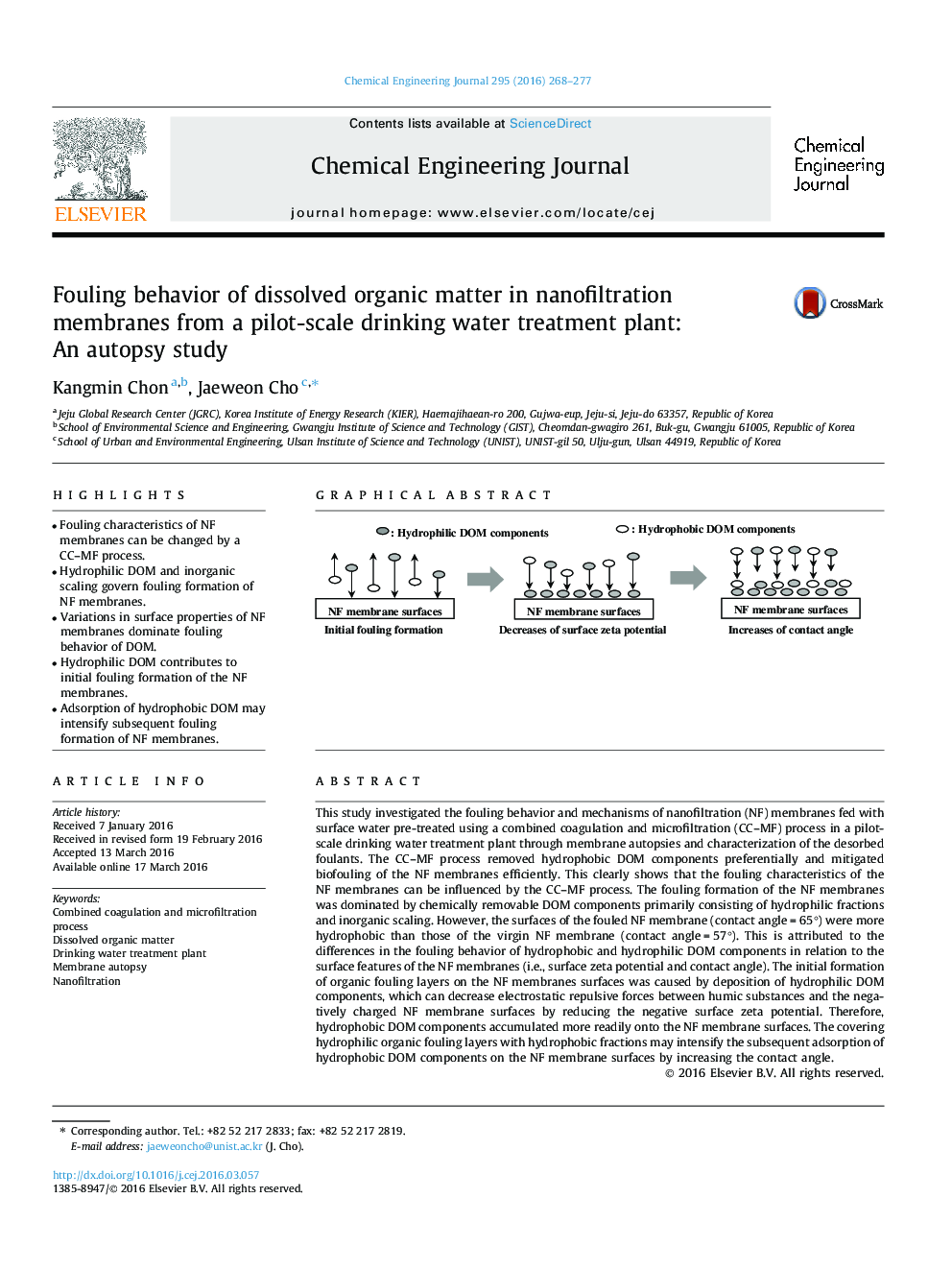| Article ID | Journal | Published Year | Pages | File Type |
|---|---|---|---|---|
| 145611 | Chemical Engineering Journal | 2016 | 10 Pages |
•Fouling characteristics of NF membranes can be changed by a CC–MF process.•Hydrophilic DOM and inorganic scaling govern fouling formation of NF membranes.•Variations in surface properties of NF membranes dominate fouling behavior of DOM.•Hydrophilic DOM contributes to initial fouling formation of the NF membranes.•Adsorption of hydrophobic DOM may intensify subsequent fouling formation of NF membranes.
This study investigated the fouling behavior and mechanisms of nanofiltration (NF) membranes fed with surface water pre-treated using a combined coagulation and microfiltration (CC–MF) process in a pilot-scale drinking water treatment plant through membrane autopsies and characterization of the desorbed foulants. The CC–MF process removed hydrophobic DOM components preferentially and mitigated biofouling of the NF membranes efficiently. This clearly shows that the fouling characteristics of the NF membranes can be influenced by the CC–MF process. The fouling formation of the NF membranes was dominated by chemically removable DOM components primarily consisting of hydrophilic fractions and inorganic scaling. However, the surfaces of the fouled NF membrane (contact angle = 65°) were more hydrophobic than those of the virgin NF membrane (contact angle = 57°). This is attributed to the differences in the fouling behavior of hydrophobic and hydrophilic DOM components in relation to the surface features of the NF membranes (i.e., surface zeta potential and contact angle). The initial formation of organic fouling layers on the NF membranes surfaces was caused by deposition of hydrophilic DOM components, which can decrease electrostatic repulsive forces between humic substances and the negatively charged NF membrane surfaces by reducing the negative surface zeta potential. Therefore, hydrophobic DOM components accumulated more readily onto the NF membrane surfaces. The covering hydrophilic organic fouling layers with hydrophobic fractions may intensify the subsequent adsorption of hydrophobic DOM components on the NF membrane surfaces by increasing the contact angle.
Graphical abstractFigure optionsDownload full-size imageDownload as PowerPoint slide
